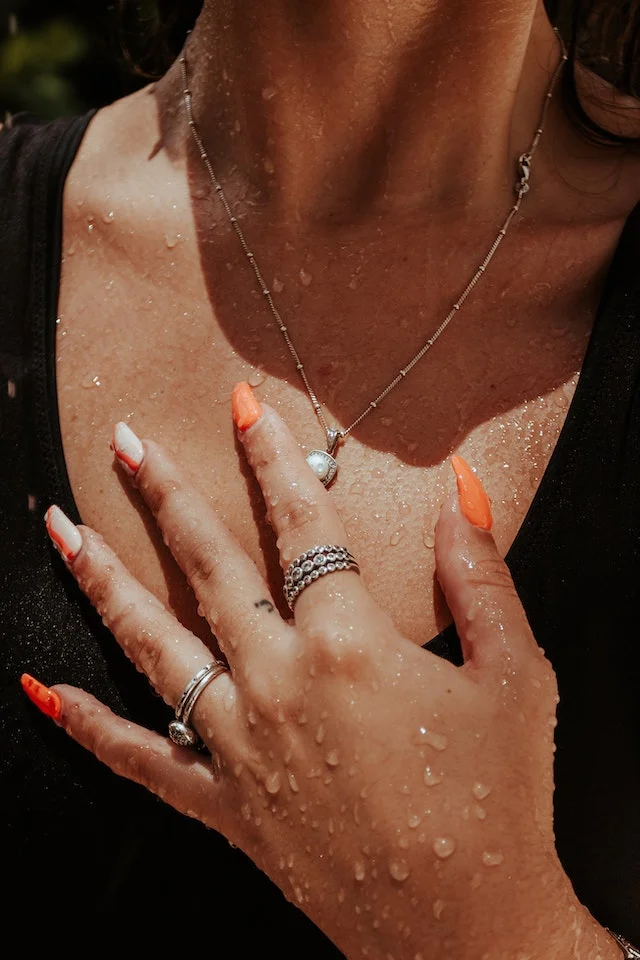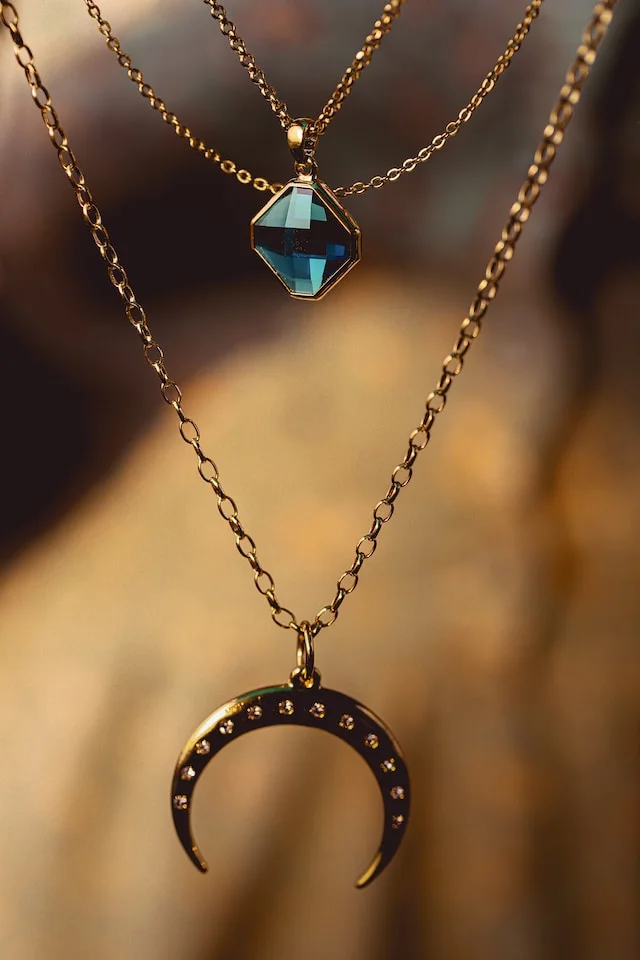Tips for Drying Out a Wet Necklace
Having your prized necklace become wet for no apparent reason might be unsettling. Necklaces aren’t water-resistant, so it’s best to avoid getting them wet in the shower, the pool, or the rain. Don’t worry, though; a wet necklace can be saved and brought back to life with the appropriate drying methods. If you want to dry out a necklace without damaging it, just follow these steps.

Items made of breakable materials
Water is particularly damaging to pearls, opals, emeralds, amber, turquoise, and coral, all of which are exceedingly fragile. Water damage to these delicate stones can cause cracking, discoloration, erosion, and clouding.
Damage Indicators
Your necklace has already suffered damage from dampness if there are visible pitting or fissures on the gem surface, milky or foggy stones instead of clear brilliance, corrosion on metals causing tarnishing or rust coloring, changes in bead or link color, peeling plating, and loss of luster. See a jeweler right away if you see any of these indicators, so they can evaluate the damage.
Blotting and Dabbing
When your necklace becomes wet, the first thing you should do is carefully blot away excess moisture. Avoid rubbing the necklace, as this can result in knots and tangles. Dab the necklace links and pendant gently with a clean, soft towel or fabric. This absorbs dripping water before it dries.
Air Drying
One of the simplest ways to dry a necklace is air drying. After blotting off initial wetness, lay the necklace out on a dry towel or cloth. Make sure it is flat and none of the chains are bunched up. Allow the necklace to air dry completely at room temperature away from any direct heat or sunlight. This prevents water spots from forming as it dries.
Use a Hair Dryer on Low Setting
Using a blow dryer on a low, cool setting can help speed up drying time. Hold the dryer 6-8 inches away and slowly blow air along the length of the necklace. Keep the dryer moving and prevent leaving it in one area. The low setting protects against heat damage while drying faster than air.
Dry Between Towels
For a more active approach, place the necklace between two clean, dry towels. Gently roll and press the towels to draw out moisture from the necklace inside. Check periodically until no more water transfers onto the towels. The towels’ soft fabric prevents scratches.
Use a Desiccant
A desiccant, such as silica gel beads, absorbs excess moisture in jewelry. Overnight, place the necklace and a few packets of silica gel in a tight plastic container or bag. The beads will absorb any remaining water, allowing for thorough drying.
Rice Absorbs Water Too
Similar to desiccant packets, rice can also extract water from a necklace with close contact over time. Bury the necklace in a bowl of rice, seal it, and let it sit for 1-2 days until completely dry. The rice will draw out any remaining moisture.
Hang to Finish Drying
Once most of the initial drying is complete, hang the necklace up to finish the process. Drape it on a necklace stand or towel rack. Hanging allows air circulation to reach all sides for full drying. Gravity will help any trapped water droplets fall off.

When in Doubt, Consult a Jeweler
Skip the DIY drying attempts and go straight to a professional jeweler for really fragile or pricey necklaces. They have specialist equipment, like as ultrasonic cleaners, to dry jewelry properly and safely. Allow them to handle the drying process in a safe manner.
Conclusion
You may successfully dry a wet necklace at home using techniques such as blotting, air drying, desiccants, and blow dryers on low heat. Simply handle the necklace gently and avoid using direct high temperatures. Necklaces can be totally recovered from unexpected wetness if done correctly. Handle with care, and your jewelry will sparkle like new in no time!
FAQs
Generally, it is ok to shower with your jewelry. If your jewelry is gold, silver, platinum, palladium, stainless steel, or titanium, you’re safe to shower with it. Other metals like copper, brass, bronze, or other base metals shouldn’t go in the shower as they can turn your skin green.
We recommend keeping your silver and gold jewelry clear of water for the most part. That said, the occasional shower in your pendant necklace or cuff bracelet shouldn’t cause too much damage.
Truly fade-proof jewelry metals are solid metals such as solid gold, titanium, platinum, non-plated stainless steel and non-plated sterling silver.
“In short, solid gold—14k or 18k, for example—is your best bet for waterproof jewelry, thanks to its purity,” explains Kahn. It’s the real deal (and typically with a real eye-popping price tag attached), not blended with any quick-to-fade metal alloys, and hypoallergenic to boot.
